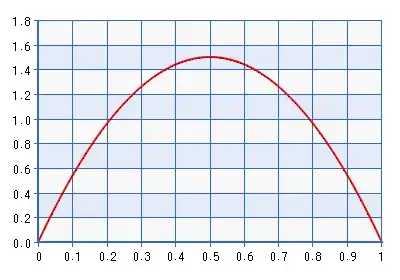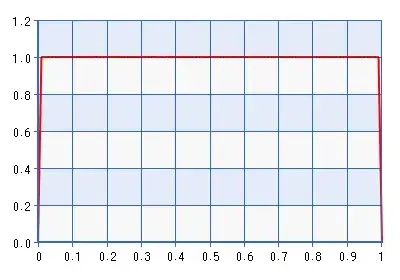In Bayesian Data Analysis, chapter 13, page 317, second full paragraph, in the modal and distributional approximations, Gelman et al. write:
If the plan is to summarize inference by the posterior mode of $\rho$ [the correlation parameter in a bivariate normal distribution], we would replace the U(-1,1) prior distribution with $p(\rho) \propto (1 - \rho)(1 + \rho)$, which is equivalent to a Beta(2,2) on the transformed parameter $\frac{\rho + 1}{2}$. The prior and resulting densities are zero at the boundaries and thus the posterior mode will never be -1 or 1. However,...the prior density for $\rho$ is linear near the boundaries and thus will not contradict any likelihood.
Below is a plot of the PDF for the Beta(2,2) distribution.

Although the plot is given for the domain [0,1], the shape is the same for the domain [-1,1] obtained by performing the inverse of the transformation described in the quote above. This is a fairly informative distribution! It gives about seven times the density to $\frac{\rho + 1}{2} = 0.5$ than it does to $\frac{\rho + 1}{2} = 0.3,0.97$. So in fact it would contradict the likelihood if the likelihood pointed toward something far from the boundaries, but even further from $\rho = 0$. Wouldn't a better boundary avoiding prior be Beta(1 + $\delta$,1 + $\delta$), where $\delta \rightarrow 0$. Take, for example, Beta(1.0001, 1.0001), plotted below:

The trouble with this prior, of course, is that the density drops very sharply near zero, which may contradict the likelihood of it points to a space that is very very near a boundary. Which brings me to my question:
Why not just set the prior of the transformed correlation parameter to Beta(1,1)? Because the beta distribution density is zero for $\frac{\rho + 1}{2} = 0,1$, this is equivalent to the uniform distribution over the open interval (-1,1) rather than the closed interval [-1,1], and so is it not a boundary avoiding prior, and is it not preferable to a prior that places fairly strong belief in the probability that $\rho = 0$, which is only desirable if you actually have that belief?
More generally, isn't using the beta distribution by definition a boundary avoiding prior because its support is $0 < \frac{\rho + 1}{2} < 1$?